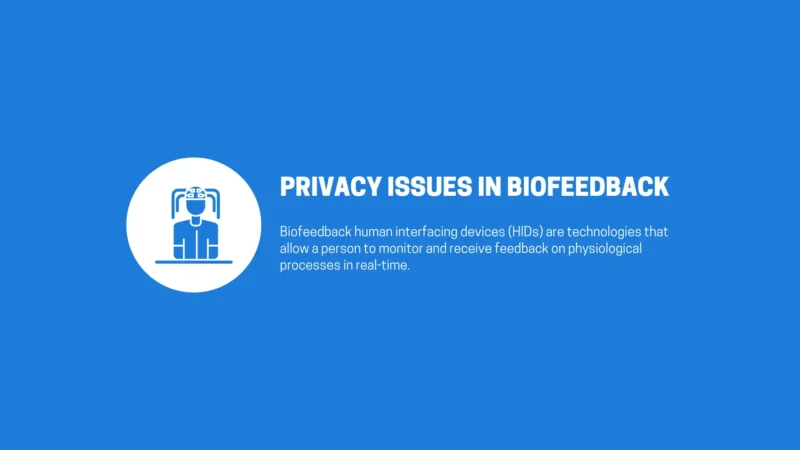Biofeedback human interfacing devices (HIDs) are technologies that allow a person to monitor and receive feedback on physiological processes in real time. Biofeedback HIDs have recently become increasingly popular, but this has also resulted in the emergence of privacy concerns. Devices such as those developed by CTRL-labs and Neuralink collect personal health information (PHI). This raises questions about data handling and the privacy of that data. To address this issue, companies need to be transparent with their users about data sharing and educate them on how companies encrypt the PHI they collect.
One approach to visualize the use of personally identifiable information (PII) is using line drawing analysis. The analysis can help identify encryption methods for users’ PII. This analysis can facilitate the discussion on the encryption of personal health information. It also helps reduce the possibility of companies that produce biometric devices being exposed to legal action in the future. Such as through legislation similar to privacy laws in Europe.
In summary, privacy is a significant issue for HID biofeedback, so companies must be transparent about data usage and encryption methods to ensure user control over their personal health information. Line drawing analysis can be a useful tool to visualize and address these privacy concerns.
Privacy of biofeedback human interfacing devices
Brendan Philip Beauchamp, Lindsay Corneal, Nabeeh Kandalaft
The public and governmental focus have been shifted increasingly onto data and privacy due to Facebook’s standoff with Apple and several Nations’ Governments. An imperative for the discussion of data handling has been made, while Biofeedback human interfacing device (HID) companies such as CTRL-labs and Neuralink introduce new risks in the access, use, and control of personal health information. This paper combines the lexicon of digital self-extension with line drawing analysis to help visualize the industry use of personally identifiable information (PII). Through this analysis encapsulation methods of users’ PII have been identified such that discussion of encrypting personal health information (PHI) can be facilitated through analogy. To reduce the likelihood that companies generating biometric hardware are subject to future legal action through laws analogous to European Privacy Law, it is in their best interest to be transparent with their users about data sharing and educate them on how the companies encrypt their PHI. Should users consent to the use of biometric hardware, this process validates the user control of their own PHI.
By: I. Busthomi

